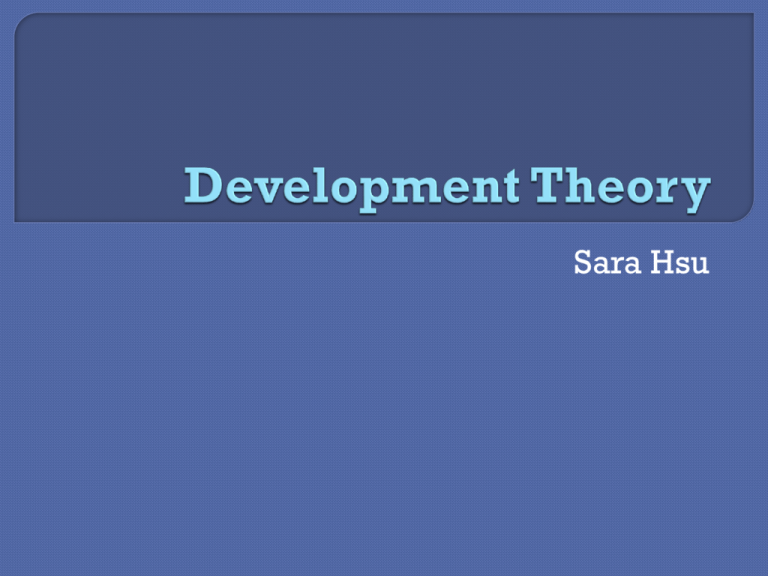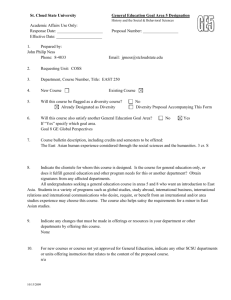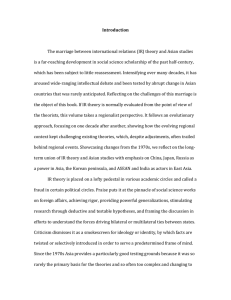Week Three-Development Theory
advertisement

Sara Hsu Seeks to explain how and why countries develop Series of stages or product of factors General categories of theories: Convergent and nonconvergent, latter incl: • theories that emphasize multiple equilibria • theories of aspiration gaps • theories of history dependence • theories of institutions China, India and Japan utilized theories of marketization and trade liberalization in different ways Used industrialization theory as embodied in the theories of Walt Whitman Rostow and W. Arthur Lewis Used as a prime basis for the theory of Ranis and Fei (1961) Used as the prime exception for Moulder (1977)’s dependency theory First theory to attempt to explain Japanese development was the “flying geese” theory Akamatsu’s (1962): economic development took place on a global scale, with Western Europe as a lead goose, Japan as a lead goose on a regional scale Seven stages of economic development 1. Asian countries traded Asian products for Western European industrial products. 2. occurred when Asian handicrafts industry was destroyed by increased amounts of Western European manufactured products entering the area 3. Western European techniques and capital flowed into Asia to support large scale production of raw materials for export to Europe, in exchange for consumer goods. 4. Western European capital flowed into Asia to support production, this time of processed raw materials. 5. Asian domestic capital was used to generate raw materials. Capital was imported from Western Europe to produce consumer goods 6. manufactured goods were produced by domestic Asian industries. Capital goods were imported from Western Europe. 7. the Asian country was able to export manufactured consumer products, and to produce some capital goods itself. Laid out five stages of development through which each economy must pass: • the traditional society • the preconditions for take-off • the take-off • the drive to maturity • the age of high mass-consumption Two sectors: 1) traditional agricultural sector with disguised unemployment and 2) capitalist industrial sector that consumes surplus food produced by agricultural sector. Surplus labor moves from agriculture to industry First phase: labor perfectly elastic Second phase: no disguised unemployment; commercialization of agriculture Japan was exception Japan’s development was due to its ability to shield itself from colonialism Other non-Western societies became colonized by Western powers, stunting their development Incorporated Marxism and Mao Zedong Thought Marxism: basis for developing society Mao Zedong Thought: building of Communist Party “Keeping up appearances” of continuity David Ricardo’s Theory of Comparative Advantage China’s “grand international cycle” theory: because developed countries moved away from labor-intensive production, China should focus on labor intensive production to support the upward movement of developed countries’ economies Beijing Consensus Prompted to reform under Neoliberal Theory by IMF Applied selectively and gradually Criticized by some for being focused on growth rather than well-being East Asian Developmental State Development theory has been influenced by and has influenced development in Asia. Development theories applicable to India include Neoliberal theory. Those applicable to China include Deng Xiaoping theory, comparative advantage. Those applicable to Japan include “flying geese,” stages of growth, migration theory. Although currently the Washington Consensus policies of privatization and deregulation are less in vogue, from the 1940s to the 1960s, it was generally accepted that the state would play a large role in the industrialization process. Questions?





